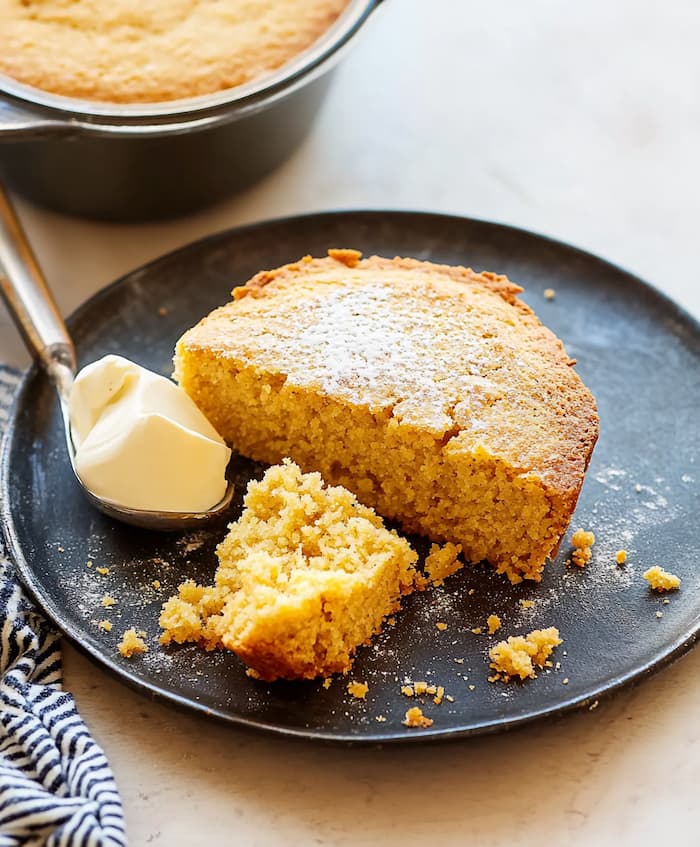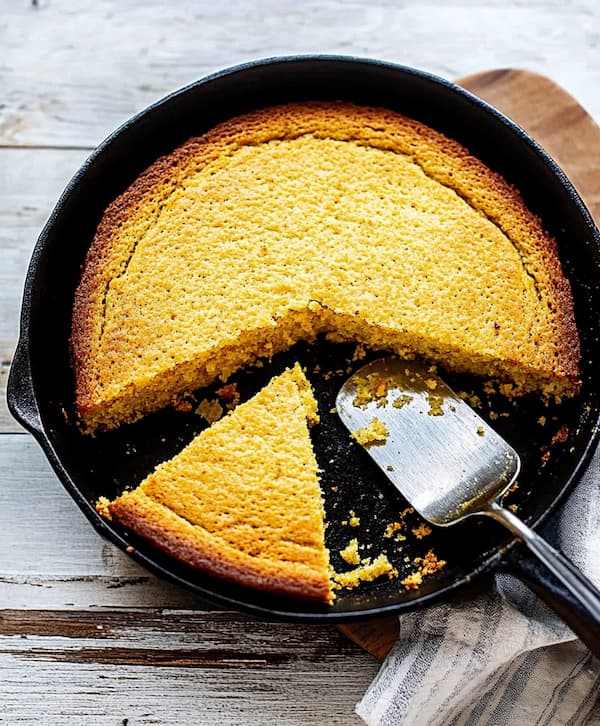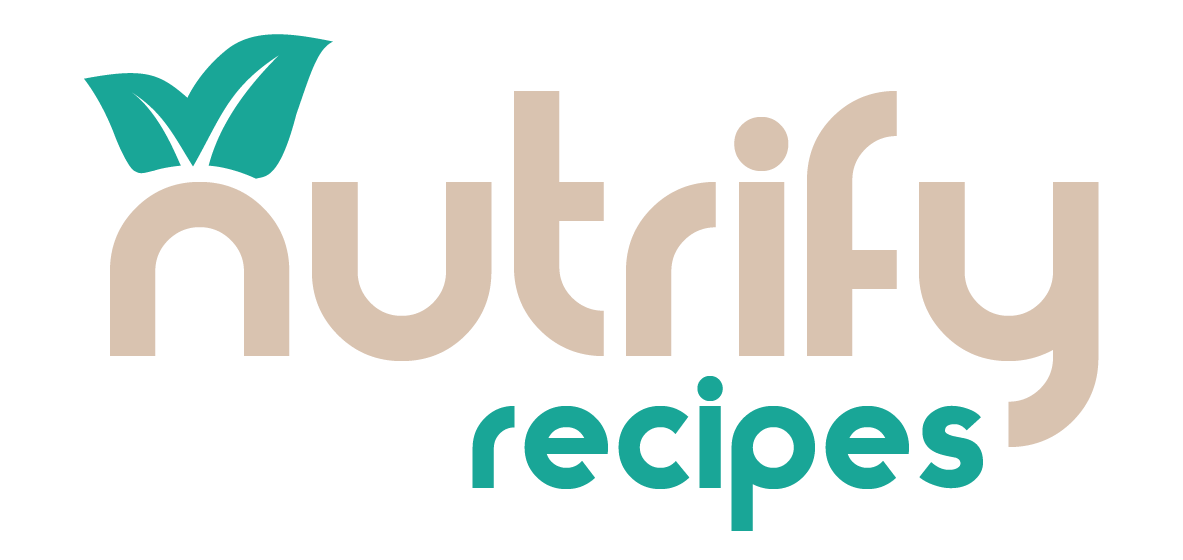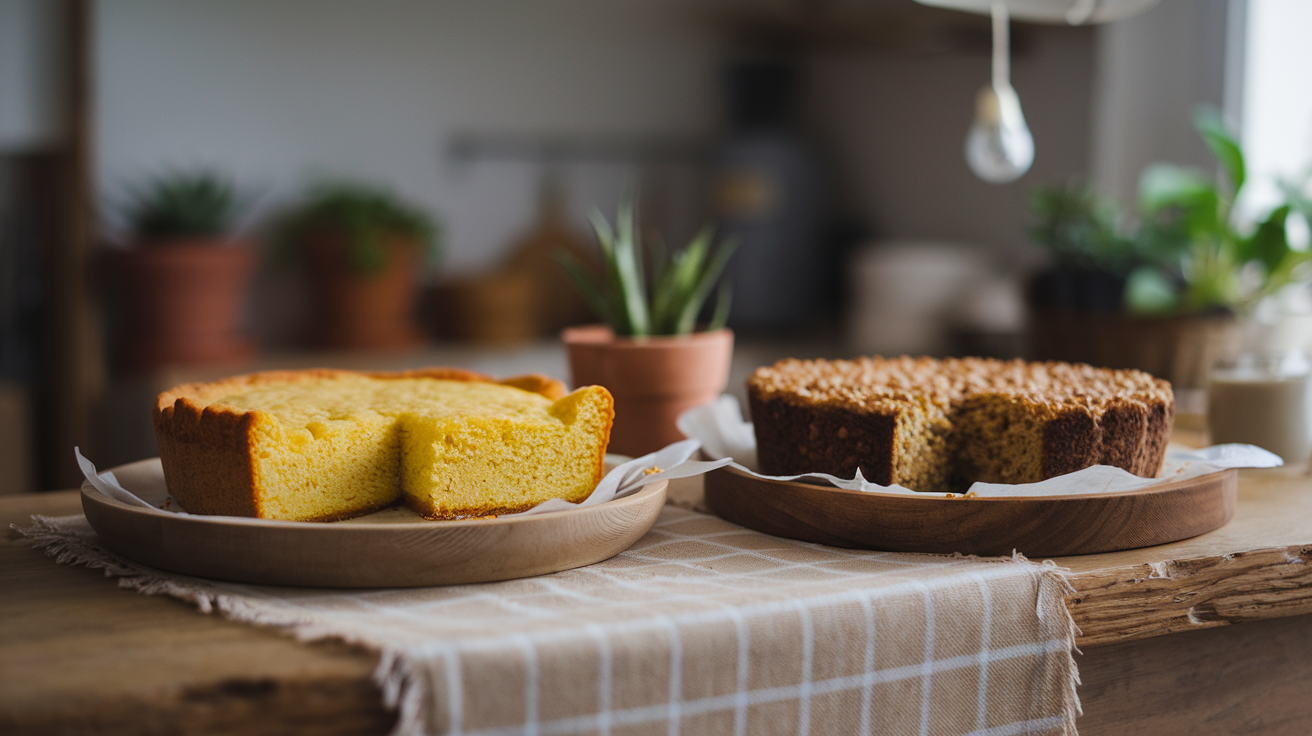Cornbread is a timeless classic in American cuisine, loved for its versatility, simplicity, and ability to pair beautifully with a variety of dishes. Found on tables across the United States, this humble bread is made primarily from cornmeal, a staple ingredient in both traditional and modern kitchens. However, regional differences have given rise to distinct variations, with Southern cornbread standing out as a unique category.
While the word “cornbread” often conjures images of golden, fluffy slices, its flavor and texture vary significantly depending on the region. The primary distinction lies between the sweeter, cake-like version often found in Northern areas and the savory, dense bread deeply rooted in the culinary traditions of the American South.
In this article, we’ll delve into the differences between these two iconic styles of cornbread. From ingredients to cooking methods, we’ll explore what makes Southern-style cornbread unique compared to its sweeter counterpart and why these variations exist. Whether you’re a longtime fan or new to the world of this beloved bread, you’ll gain a deeper appreciation for its regional charm and culinary diversity.
Table of contents
The Origins of Cornbread
A Culinary Legacy
Cornbread has its origins in Native American cuisine, where corn was ground into meal and mixed with water to create simple bread. When European settlers arrived in the Americas, they adopted this method, adding their own ingredients to suit regional tastes and available resources.
Southern Roots
The Southern style of cornbread emerged as corn became a key crop in the region. With limited access to wheat flour, cornmeal often served as the primary ingredient for bread. This practical necessity led to the creation of a savory, simple cornbread that continues to be a staple in Southern cuisine today.
Cornbread vs. Southern Cornbread: Ingredients That Define the Taste
The primary difference lies in the ingredients. Classic cornbread often incorporates a balance of flour and cornmeal, producing a softer, cake-like texture. On the other hand, Southern cornbread, as seen in The Best Southern Cornbread Recipe, relies more heavily on cornmeal, creating a crumbly, gritty texture. Southerners also often exclude sugar, favoring a savory profile.

Sweetness Levels
One of the most debated aspects of cornbread is whether or not it should be sweet. This question often separates general cornbread recipes from the more traditional Southern cornbread.
Cornbread (General): In many regions, particularly in the North, cornbread recipes include sugar or other sweeteners like honey or molasses. This results in a slightly sweet flavor, making it more akin to a dessert or breakfast bread in some cases.
Southern Cornbread: Traditionally, Southern cornbread is savory, completely omitting sugar. For many in the South, adding sugar to cornbread is considered an affront to culinary tradition. However, modern adaptations of Southern-style cornbread sometimes include a hint of sweetness to appeal to broader tastes.
The difference in sweetness reflects regional preferences. Northern cornbread caters to those who enjoy a sweeter baked good, while Southern cornbread remains a reflection of its roots as a simple, savory staple. This contrast highlights how a single dish can take on unique flavors across different parts of the country.
Type of Cornmeal
The choice of cornmeal plays a critical role in distinguishing these two types of cornbread. Cornmeal is ground from dried corn kernels and is available in different textures and colors.
- Cornbread (General): Northern-style cornbread often uses yellow cornmeal, which has a slightly sweeter and milder flavor. This complements the sugar or sweeteners added to the recipe.
- Southern Cornbread: Southern recipes often favor white cornmeal, which has a more robust and earthy taste. This preference for white cornmeal reflects the agricultural history of the South, where white corn was more commonly grown and used.
The coarseness of the cornmeal can also vary. Southern cornbread often uses medium or coarse-ground cornmeal, giving it a denser and more textured crumb compared to the finer, smoother texture of some Northern versions.
Wheat Flour vs. Pure Cornmeal
The inclusion of wheat flour is another area where the two types of cornbread diverge.
- Cornbread (General): Most recipes outside the South use a combination of wheat flour and cornmeal. The addition of flour makes the bread softer and more cake-like in texture. It also allows for greater leavening, contributing to its fluffiness.
- Southern Cornbread: Traditional Southern cornbread often uses pure cornmeal with no wheat flour at all. This creates a dense, crumbly texture that sets it apart from its Northern counterpart. In some recipes, a small amount of self-rising cornmeal is used, which eliminates the need for additional flour or leavening agents.
Buttermilk and Eggs
Both styles of cornbread rely on eggs and dairy to bind the ingredients and create structure, but Southern cornbread often distinguishes itself by using buttermilk instead of regular milk.
Cornbread (General): Regular milk or cream is commonly used in many cornbread recipes, particularly in sweeter versions. These ingredients provide a neutral flavor that complements the sugar or other sweeteners often added in Northern-style cornbread.
Southern Cornbread: Buttermilk is a hallmark of traditional Southern cornbread. Its tangy flavor enhances the savory profile of the dish, adding depth to the overall taste. Buttermilk also reacts with baking soda to create a gentle rise, allowing the cornbread to maintain its dense yet slightly fluffy texture without requiring additional leavening agents.
This distinction not only highlights the regional differences in taste but also emphasizes how ingredient choices influence the texture and flavor of each version of cornbread.
Fats and Oils
The type of fat used in cornbread recipes significantly influences the flavor and texture.
- Cornbread (General): Butter is the primary fat used in most non-Southern cornbread recipes. It adds richness and complements the sweetness of the bread.
- Southern Cornbread: Traditional recipes often use bacon grease or lard instead of butter. This imparts a smoky, savory flavor to the bread, making it a perfect side dish for hearty Southern meals.
Improving Readability, Sentence Length, and Transitions
Here is the revised version of the Texture Differences section, rewritten to address readability issues by shortening sentences, adding more transition words, and simplifying complex words:
Texture Differences
The texture of cornbread is one of the biggest differences between traditional Southern cornbread and other variations. While the ingredients are similar, the way they are used creates two distinct types of bread. Let’s explore the unique textures of each.
Light and Fluffy vs. Dense and Rustic
- Cornbread (General): Cornbread made outside the South is typically light and fluffy. The addition of wheat flour softens the texture, while sugar adds moisture, creating a slightly sweet flavor. Higher amounts of baking powder or baking soda are often used, allowing the bread to rise more and achieve an airy, cake-like consistency. This cornbread is easy to crumble but still holds its shape when sliced, making it versatile for various uses.
- Southern Cornbread: In contrast, Southern cornbread is dense and rustic, staying true to its traditional roots. It uses little to no wheat flour, resulting in a firmer texture. While it is crumbly, it still maintains its shape, making it an ideal choice for dishes like cornbread stuffing. Its hearty density provides a satisfying bite, perfectly complementing savory meals and showcasing its role as a Southern staple.
The Role of Cornmeal Texture
The type of cornmeal also changes the texture of the cornbread.
- Cornbread (General): Finer cornmeal is commonly used outside the South. This creates a smoother bread with a uniform texture. The result is softer and less rustic, which many people find appealing.
- Southern Cornbread: Southern recipes often call for coarser cornmeal. This adds a hearty, grainy texture that reflects traditional milling methods. Each bite feels more rustic and authentic, giving Southern cornbread its distinct charm.
Moisture Content
Moisture is another area where these two types of cornbread differ.
- Cornbread (General): Recipes with sugar, butter, and milk are usually moist. This makes the bread soft and rich, ideal as a snack or a standalone side dish. It also stays fresher for longer because of the added moisture.
- Southern Cornbread: Southern cornbread tends to be drier. This helps it pair well with soups, stews, and gravies. The dryness prevents it from becoming soggy when paired with these dishes. Although drier, it remains flavorful and satisfying.
Crust Variations
The crust is another defining feature, especially in Southern cornbread.
- Cornbread (General): Cornbread baked outside the South typically has a soft, light crust. It is often baked in a regular dish or muffin tin, which gives it a uniform outer layer. This type of crust blends into the bread rather than standing out.
- Southern Cornbread: Southern cornbread is famous for its thick, crispy crust. It is traditionally baked in a preheated cast-iron skillet. The skillet’s heat creates an instant sizzle when the batter is poured in. This forms a crunchy, golden edge that is impossible to resist. The crust provides a perfect contrast to the soft interior.
Here is the revised Fat Content and Flavor section, rewritten to reduce passive voice, simplify complex words, and maintain clarity:
Fat Content and Flavor
The fat used in cornbread recipes greatly influences their taste. Cornbread and Southern cornbread rely on fats to enhance flavor and moisture, but the type of fat chosen differs significantly, creating unique flavor profiles.
Butter vs. Bacon Grease
The type of fat sets the foundation for the flavor of cornbread. Butter is the common choice for most non-Southern recipes. It gives the bread a rich, creamy taste that complements the sweetness often found in these versions. Bakers melt butter and mix it into the batter or brush it on top for extra moisture and a golden finish.
Southern cornbread, on the other hand, often uses bacon grease or lard instead of butter. These fats add a smoky, savory flavor that makes Southern cornbread distinct. Cooks traditionally save bacon drippings and use them not only to flavor the batter but also to grease the skillet, creating a rich and crispy crust.
Tanginess from Buttermilk
Another ingredient that affects flavor is the choice of liquid dairy. Non-Southern cornbread recipes often use regular milk, which creates a neutral, creamy flavor. This works well in sweeter recipes, allowing the sugar and cornmeal to stand out.
Southern cornbread, however, frequently includes buttermilk. Its tangy taste enhances the savory notes of the bread. Buttermilk also interacts with baking soda to give the cornbread a slight rise. This combination creates a subtle depth of flavor that complements the rustic, earthy taste of the cornmeal.
Flavorful Additions
Cornbread recipes may include additional ingredients to boost flavor. Non-Southern cornbread often incorporates sugar, honey, or molasses to add sweetness. These sweeteners make the bread more versatile, allowing it to double as a dessert or breakfast item.
Southern cornbread, in contrast, focuses on savory enhancements. Ingredients like chopped jalapeños, shredded cheese, or green onions are common additions. These extras elevate the bread while keeping its traditional savory essence intact.

Cooking Methods
Texture and Cooking Methods
Cornbread outside the South tends to be lighter and cake-like due to the inclusion of sugar and flour. Southern cornbread, however, is denser and crumbly, reflecting its rustic origins. Cooking techniques also vary. Southern cornbread is often cooked in a cast-iron skillet, creating a golden crust that adds depth and flavor. For a detailed guide on achieving this perfect golden crust, check out The Best Southern Cornbread Recipe for Perfect Golden Crust.
Baking Dish vs. Cast-Iron Skillet
The type of pan used to bake cornbread plays a critical role in its final texture.
- Cornbread (General): Many recipes suggest using a standard baking dish or a muffin tin. These options are convenient and result in a softer crust. The bread bakes evenly, but the outer layer often lacks the distinctive crispness found in Southern versions. Muffin tins, in particular, create smaller, individually portioned servings, perfect for breakfast or snacks.
- Southern Cornbread: Southern cornbread is almost always baked in a preheated cast-iron skillet. This method is as much a tradition as it is a technique. Before adding the batter, cooks heat the skillet with bacon grease, lard, or oil. When the batter hits the hot pan, it begins to cook instantly, forming a thick, crispy crust. This crust is one of the most cherished characteristics of Southern cornbread.
Temperature and Crust Formation
The baking temperature and technique also influence the bread’s texture and appearance.
- Cornbread (General): Most recipes call for moderate baking temperatures of 350°F to 375°F. This ensures the bread cooks evenly without developing a hard crust. The result is a soft, golden loaf that crumbles easily and pairs well with sweet or savory toppings.
- Southern Cornbread: Southern recipes often use higher oven temperatures, around 400°F to 450°F. The intense heat, combined with the preheated skillet, ensures a golden, crunchy crust while keeping the interior moist. This method creates a bread that stands out for its contrasting textures—crisp on the outside and tender on the inside.
Regional Preferences in Techniques
Cooking techniques also reflect regional preferences and the historical influences behind each style.
- Cornbread (General): Outside the South, cornbread recipes often prioritize convenience. Quick-mixing batters and modern baking tools simplify the process. These recipes may focus on adaptability, allowing bakers to add ingredients like blueberries, nuts, or dried fruit for variety.
- Southern Cornbread: Southern cooking traditions emphasize preserving authenticity. Many cooks use family recipes passed down through generations. The cast-iron skillet is central to this tradition, both for its ability to retain heat and for the flavor it adds over time. The skillet itself often becomes a treasured kitchen heirloom.
Serving Styles: Sweet vs. Savory
While classic cornbread might be enjoyed with honey or maple syrup, Southern cornbread is more often served alongside savory dishes, such as collard greens or beans. Curious about the perfect pairings? Check out these tasty sides for cornbread.
Regional Preferences and Variations
Cornbread and Southern cornbread not only differ in taste and preparation but also in how they are embraced across regions. These variations reflect cultural influences and regional preferences, making each style a unique expression of its culinary roots.
Northern Cornbread
Cornbread in Northern regions leans heavily toward sweetness and softer textures. This preference stems from the broader use of sugar in Northern baking traditions.
- Sweetness and Texture: Northern cornbread often includes sugar, honey, or molasses, giving it a dessert-like quality. The addition of wheat flour makes the bread fluffier and less crumbly, catering to those who enjoy a softer bite.
- Modern Adaptations: Northern cornbread frequently incorporates ingredients like berries, nuts, or even spices like cinnamon. These additions make it versatile, allowing it to serve as a breakfast option, a snack, or even a base for desserts.
Southern Cornbread
Southern cornbread is deeply rooted in tradition, emphasizing simplicity and bold, savory flavors. This style reflects the resourcefulness of Southern cooks, who relied on cornmeal and local ingredients to create hearty, satisfying dishes.
- Savory and Rustic: Traditional Southern cornbread avoids sugar, focusing on the earthy flavor of cornmeal. Its dense and crumbly texture pairs perfectly with Southern staples like collard greens, fried chicken, or stews.
- Variations: While classic recipes remain popular, many modern cooks add ingredients like jalapeños, cheese, or even cracklings (fried pork rinds) to enhance the flavor.
Cultural Influences
The differences in cornbread styles reflect the cultural and historical influences of each region. In the North, cornbread evolved alongside sweeter baking traditions, while in the South, cornbread became a versatile staple, serving both everyday meals and special occasions.
Southern cornbread, in particular, carries a sense of identity and pride. Many families guard their cornbread recipes, passing them down through generations as a way of preserving their culinary heritage.
Cultural and Culinary Significance
Cornbread is more than just a side dish—it’s a symbol of comfort and community. Across the country, it plays a role in various traditions and cuisines, adapting to local tastes while remaining a beloved staple.
Cornbread in Everyday Meals
Both cornbread and Southern cornbread shine as versatile additions to meals. They can accompany a wide range of dishes, including:
- Soups and Stews: Cornbread absorbs broths and sauces, making it a perfect companion for hearty meals.
- Barbecues and Picnics: Its simplicity and portability make it a favorite at outdoor gatherings.
- Breakfasts: Sweetened cornbread pairs wonderfully with butter, jam, or honey, while savory cornbread can be served alongside eggs and bacon.
Southern Cornbread and Tradition
In the South, cornbread holds a special place in family meals and gatherings. Whether served with holiday feasts or used in traditional dishes like cornbread dressing, it represents comfort and heritage. Its role extends beyond the plate, symbolizing the resourcefulness and creativity of Southern cooks.
FAQs
Can Southern cornbread be sweetened?
Yes, modern adaptations of Southern cornbread may include a small amount of sugar. However, traditional recipes are strictly savory.
Is cornbread always made with cornmeal?
Cornmeal is the primary ingredient in authentic cornbread, but some recipes blend it with wheat flour or use alternative grains for unique variations.
Why does Southern cornbread use a skillet?
The cast-iron skillet creates a crispy crust that is a hallmark of Southern cornbread. Preheating the skillet ensures the batter starts cooking immediately, forming this signature texture.
What is the healthiest way to make cornbread?
For a healthier version, reduce the fat content by using olive oil or yogurt. You can also use whole-grain cornmeal and add ingredients like vegetables or flaxseeds for extra nutrition.
Can I use Southern cornbread for stuffing?
Yes, Southern cornbread is ideal for stuffing due to its crumbly texture, which absorbs flavors from broths and spices without becoming too soggy.
What makes Northern cornbread different from Southern cornbread?
Northern cornbread is sweeter, softer, and often includes wheat flour, while Southern cornbread is savory, dense, and baked with minimal or no sugar.
Conclusion
Both cornbread and Southern cornbread are delicious in their own rights, but their differences reflect the cultural and culinary diversity of America. Whether you prefer a sweet, cake-like treat or a savory, crumbly side, there’s no wrong choice.
Related Article Recipes You Might Like
If you’re a fan of homemade bread, you might also enjoy trying Best Vegan Jalapeno Cheese Artisan Bread, which features a perfect blend of spice and cheesiness. It pairs well with dishes like Ultimate Baked Beans with Ground Beef or even a warm bowl of Creamy Beef Pasta.

